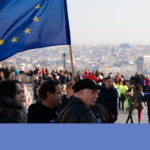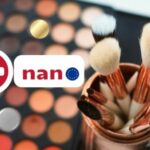
European NGOs mobilized on nanos

By AVICENN team – Last modification February 2022
European NGOs mobilized on nanos
Main NGOs mobilized on nanos at European level
- The European consumer voice in standardisation
(ANEC)) - the European Environmental Bureau (EEB)
- the European Consumers’ Organisation (BEUC)
- Friends of the Earth Germany (BUND)
- ChemSec
- the Center for international environmental law (CIEL)
- ClientEarth
- Environmental Coalition on Standards (ECOS)
- European Public Health Alliance (EPHA)
- Health and Environment Alliance (HEAL)
- Health Care Without Harm (HCWH)
- Öko Institute
- Women in Europe for a Common Future (WECF)
NGOs face the key challenge of defining the term “nanomaterial”
On February 8, 2022, fifteen NGOs sent an open letter to the European Commission asking it to clarify and improve its definition of the term “nanomaterials“. After seven years of delay and procrastination, the European Commission hastily launched a so-called “consultation” last May-June, which proposes unclear changes and, worse, is likely to make a large number of manufactured nanoparticles disappear from the authorities’ radar. The NGOs would therefore like the Commission to open the discussion so that this definition can be reworked collectively before being integrated into the various European regulations.
A mobilization that sometimes pays off
The role of European NGOs in the European ban on E171 in food
Strongly mobilized since 2017 for the withdrawal of E171 from consumer products, French NGOs obtain from public authorities the ban of E171 in France from 2019.
In order to allow the same level of protection for Europeans, European associations – and in particular BEUC, HEAL, ECOS, WECF, SAFE, EEB, CIEL and Foodwatch – took action from the beginning of 2019 to ask for the extension of the ban on E171 at the European level. Up to May 2021, the various opinions of the European Food Safety Agency (EFSA) considered E171 as a “safe” additive – and this, despite the numerous scientific publications showing harmful effects that had been accumulating for several years.
Thus, open letters1On December 5, 2019, eight French and European associations sent a joint letter to the new European Commissioner for Health, Stella Kiriakides, asking her to support France’s ban on E171 and to extend it to the rest of Europe. On May 3, 2019, some 40European associations are asking the European Commission to extend the suspension of E171 to the entire European Union (and at the very least, not to cancel the measure in France) in a letter sent to this day. , product tests2– August 30, 2019: The Foodwatch association reveals the presence of nanoparticles of titanium dioxide in products Dr. G. B. Oetker in Germany After France, E171 must be banned everywhere in Europe, the NGO claims.
– July 5, 2019: The Spanish magazine OCU-Compra Maestra revealed that E171 and E551 contained in all 8 food products tested by the Spanish consumer association “Organización de Consumidores y Usuarios” (OCU) contain nanoparticles, in varying proportions (ranging from 27 to 76% for the 4 products containing E171, 100% for the 4 products containing E551), without mentioning [nano] on the packaging, contrary to what is required by regulation. The consumer association OCU demands the re-evaluation of these additives.
– June 2019: The Belgian magazine Test santé n°151 devotes five pages to nanomaterials; it reveals that the E171 contained in the 6 food products tested contain nanoparticles, in varying proportions (ranging from 7 to 80%), without mention [nano] on the packaging contrary to the regulations. And requests the suspension of the marketing of E171 in Belgium (among other additives).
– May 23, 2019: In Italy, the consumer association Altroconsumo publishes the results of tests conducted on food products, which show high levels of nanoparticles in the food additives E171, E174 (silver) and E551 (silica) but not reported on the label. The association asks not only the suspension of E171 but also the application of the precautionary principle for other nanoparticulate additives,, inter-associative press releases3On September 12, 2019, several NGOs react following the publication of a U.S. study downplaying the risks of the controversial additive E171, a fortnight before a meeting in Brussels examining the French ban on E171. Based on initial disturbing elements identified by Avicenn (colon samples “darkened” in an unexplained way, almost doubling of colorectal cancer markers judged “not significant” by the authors), NGOs question the scientific rigor of the study financed by three industry federations reluctant to see the removal of E171 (the federation of manufacturers of TiO2 (TDMA), the federation of dye manufacturers (IACM) and the trade federation (GMA))., petitions4On November 4, 2019, the petition launched by the NGO SAFE (Safe Food Advocacy Europe) in partnership with Agir pour l’Environnement and ECOS to call for a European Union-wide ban on E171 surpassed 80,000 signatures
-September 16,2019: The French ban on E171 was on the agenda of an expert meeting that took place in Brussels. Several associations had previously asked their government to support the French measure and encouraged the European Commission to remove E171 from the list of authorized additives, like Test Achats in Belgium. A petition in English has been launched by the NGO Safe Food Advocacy Europe (SAFE). and other forms of media coverage5From January 26 to August 1, 2021, the Arte documentary La Grande Malbouffe looks back at the suspension of E171, with some of the associative, scientific, institutional and industrial actors who played a decisive role in this issue. have contributed to support this measure and resulted in the shift in the position of EFSA which published a final opinion in May 2021 concluding that this additive can no longer be considered “safe” because of its potential genotoxic effects (DNA damage).
Between 2010-2019: A decade of active but unsuccessful participation
After a decade of active but unsuccessful participation in European nanomaterials governance processes, civil society organizations were wondering: what is the point of continuing to participate in consultations and working groups if, in the end, their recommendations are never taken into account by the European Commission? However, the stakes are too high to give up.
The NGOs are still mobilized and are working for a better supervision of nanomaterials, in order to better protect human health and the environment.
- In June 2020, many NGOs proposed measures concerning nanomaterials in the context of the consultation on the roadmap of the new sustainable chemicals strategy (“Chemical strategy for sustainability”) of the European Commission6The main contributions identified at the European level: the European Environmental Bureau (EEB), Friends of the Earth Germany (BUND), the Center for Environmental International Law (CIEL), the Swiss Society for Nature Conservation (Naturskyddsföreningen)..
- On November 8, 2019, 24 NGOs sent the new European Commission their demands regarding chemical policy7Towards a non-toxic environment – NGO Chemical policy asks for the new Commission, November 2019. Among those is a section specifically dedicated to nanomaterials, written with the support of Avicenn (pp. 17-18). In particular, the NGOs are calling for nanomaterials to be appropriately regulated at the European level and for greater enforcement and monitoring of regulations (REACH registrations, mandatory labeling, worker information, etc.). More information here.
- In a text published in December 20168Reset Governance: Nanomaterials as a case study on negligence – NGO demands for adequate EU governance of nanomaterials, NGOs, December 2016, they shared several of their positions9Among other things, they reaffirmed the need to
– a specific regulation for nanomaterials that truly embodies the REACH principle of “no data, no market”.
– accountability of manufacturers throughout the life cycle of nanomaterials or products containing them
– transparency on the data collected
– labelling of nanomaterials
– studies on the health, environmental, ethical, legal and social impacts of nanotechnologies
– bio-monitoring of the environment, populations and workers
– more inclusive and participatory governance, with better consideration of NGO recommendations..
- On January 12, 2015, EEB, CIEL and Friends of the Earth Germany (BUND) sent a note to the Commission in response to its provisional conclusions on transparency measures for nanomaterials10NGO comments on Transparency measures for nanomaterials on the market: Working conclusions, EEB, CIEL, BUND, 12 January 2015.
- In 2014, CIEL, ECOS and Öko Institute set up the project “Safe Development of Nanotechnologies” aiming to ensure an appropriate assessment of the risks associated with nanomaterials in order to establish a regulatory framework in line with the precautionary principle11The project aims to increase the participation and involvement of civil society organizations in the nano activities of standardization bodies (ISO at the international level and CEN at the European level) and the OECD risk assessment guidelines. It is in these forums that decisions are made that have a major influence on the regulations or the way they are implemented. A workshop open to NGOs was organized on February 10, 2015 in Brussels: it addressed recent developments in the field of nano-risk assessment and the strategy to be put in place to promote a better framework for nanomaterials..
- In April 2014, CIEL and some of the NGOs mentioned above published a joint position paper on the regulation of nanomaterials12Position paper on the regulation of nanomaterials, CIEL, ClientEarth, the EEB, ECOS,ANEC, HCWH and BEUC, April 2014, in which they make several demands13Among these requirements:
– that by 2018, all nanomaterials on the market produced in quantities greater than 10kg per year must be registered with ECHA on the basis of a complete registration dossier specific to the nanoscale form
– that under REACH, all registration dossiers for nanomaterials must include a chemical safety assessment and must comply with the same information requirements currently required for substances classified as carcinogenic, mutagenic or toxic to reproduction (CMR).
– that the European Chemicals Agency (ECHA) must systematically check the compliance of the registration of all nanoforms and all substances suspected of including nano substances. In addition, the Community Continuous Action Plan (CoRAP) must include all substances identified as nanoforms and their assessment must be carried out without delay.
– that a publicly accessible register of nanomaterials and consumer products containing nanomaterials should be established at the European level.
– that specific labeling [nano] or declaration requirements should be required for all products containing nano (detergents, aerosols, sprays, paints, medical devices, etc.), in addition to those that apply to food, cosmetics and biocides
– that nanomaterials that have been marketed without minimum data to assess their hazards and risks should be withdrawn from the market. In the meantime, EU member states and manufacturers should use a precautionary approach in the assessment, production, use and disposal of nanomaterials.
- November 2012, CIEL, ClientEarth and BUND published a report entitled “High time to act on nanomaterials – Proposal for a ‘nano patch’ for EU Regulation” in which they advocate the introduction of a specific regulation for nanomaterials: this “nano patch” is intended to remedy the shortcomings of the existing legislation in a more flexible, efficient and rapid way than through long and tedious procedures of revision of the annexes of REACH14“High time to act on nanomaterials – Proposal for a ‘nano patch’ for EU Regulation”, CIEL, ClientEarth and BUND, Nov. 2012. (A first report in this sense was published in February by CIEL: Just Out of REACH: How REACH is failing to regulate nanomaterials and how it can be fixed, David Azoulay, February 2012).
Any questions or comments? This information sheet compiled by AVICENN is intended to be completed and updated. Please feel free to contribute.
Upcoming Nano Agenda
- Awareness-raising aimed at personnel in contact with nanomaterials during research, formulation, production, maintenance, cleaning, upkeep, etc., as well as safety coordinators or engineers, facility managers, heads of laboratories where nanoparticles are handled.
- Organizers: INSTN Grenoble (CEA)
- On the agenda: potential impact on health; metrology and protection; control of potential risks associated with nanomaterials; consideration of societal aspects.
- Website: https://instn.cea.fr/formation/maitrise-des-risques-lies-aux-nanomateriaux-sensibilisation
- Awareness-raising aimed at personnel in contact with nanomaterials during research, formulation, production, maintenance, cleaning, upkeep, etc., as well as safety coordinators or engineers, facility managers, heads of laboratories where nanoparticles are handled.
- Organizers: INSTN Grenoble (CEA)
- On the agenda: potential impact on health; metrology and protection; control of potential risks associated with nanomaterials; consideration of societal aspects.
- Website: https://instn.cea.fr/formation/maitrise-des-risques-lies-aux-nanomateriaux-sensibilisation
- 16th meeting of the “nano and health” dialogue committee
- Organizer: ANSES
File initially created in November 2012
Notes and references
- 1On December 5, 2019, eight French and European associations sent a joint letter to the new European Commissioner for Health, Stella Kiriakides, asking her to support France’s ban on E171 and to extend it to the rest of Europe. On May 3, 2019, some 40European associations are asking the European Commission to extend the suspension of E171 to the entire European Union (and at the very least, not to cancel the measure in France) in a letter sent to this day.
- 2– August 30, 2019: The Foodwatch association reveals the presence of nanoparticles of titanium dioxide in products Dr. G. B. Oetker in Germany After France, E171 must be banned everywhere in Europe, the NGO claims.
– July 5, 2019: The Spanish magazine OCU-Compra Maestra revealed that E171 and E551 contained in all 8 food products tested by the Spanish consumer association “Organización de Consumidores y Usuarios” (OCU) contain nanoparticles, in varying proportions (ranging from 27 to 76% for the 4 products containing E171, 100% for the 4 products containing E551), without mentioning [nano] on the packaging, contrary to what is required by regulation. The consumer association OCU demands the re-evaluation of these additives.
– June 2019: The Belgian magazine Test santé n°151 devotes five pages to nanomaterials; it reveals that the E171 contained in the 6 food products tested contain nanoparticles, in varying proportions (ranging from 7 to 80%), without mention [nano] on the packaging contrary to the regulations. And requests the suspension of the marketing of E171 in Belgium (among other additives).
– May 23, 2019: In Italy, the consumer association Altroconsumo publishes the results of tests conducted on food products, which show high levels of nanoparticles in the food additives E171, E174 (silver) and E551 (silica) but not reported on the label. The association asks not only the suspension of E171 but also the application of the precautionary principle for other nanoparticulate additives, - 3On September 12, 2019, several NGOs react following the publication of a U.S. study downplaying the risks of the controversial additive E171, a fortnight before a meeting in Brussels examining the French ban on E171. Based on initial disturbing elements identified by Avicenn (colon samples “darkened” in an unexplained way, almost doubling of colorectal cancer markers judged “not significant” by the authors), NGOs question the scientific rigor of the study financed by three industry federations reluctant to see the removal of E171 (the federation of manufacturers of TiO2 (TDMA), the federation of dye manufacturers (IACM) and the trade federation (GMA)).
- 4On November 4, 2019, the petition launched by the NGO SAFE (Safe Food Advocacy Europe) in partnership with Agir pour l’Environnement and ECOS to call for a European Union-wide ban on E171 surpassed 80,000 signatures
-September 16,2019: The French ban on E171 was on the agenda of an expert meeting that took place in Brussels. Several associations had previously asked their government to support the French measure and encouraged the European Commission to remove E171 from the list of authorized additives, like Test Achats in Belgium. A petition in English has been launched by the NGO Safe Food Advocacy Europe (SAFE). - 5From January 26 to August 1, 2021, the Arte documentary La Grande Malbouffe looks back at the suspension of E171, with some of the associative, scientific, institutional and industrial actors who played a decisive role in this issue.
- 6The main contributions identified at the European level: the European Environmental Bureau (EEB), Friends of the Earth Germany (BUND), the Center for Environmental International Law (CIEL), the Swiss Society for Nature Conservation (Naturskyddsföreningen).
- 7
- 8
- 9Among other things, they reaffirmed the need to
– a specific regulation for nanomaterials that truly embodies the REACH principle of “no data, no market”.
– accountability of manufacturers throughout the life cycle of nanomaterials or products containing them
– transparency on the data collected
– labelling of nanomaterials
– studies on the health, environmental, ethical, legal and social impacts of nanotechnologies
– bio-monitoring of the environment, populations and workers
– more inclusive and participatory governance, with better consideration of NGO recommendations. - 10NGO comments on Transparency measures for nanomaterials on the market: Working conclusions, EEB, CIEL, BUND, 12 January 2015
- 11The project aims to increase the participation and involvement of civil society organizations in the nano activities of standardization bodies (ISO at the international level and CEN at the European level) and the OECD risk assessment guidelines. It is in these forums that decisions are made that have a major influence on the regulations or the way they are implemented. A workshop open to NGOs was organized on February 10, 2015 in Brussels: it addressed recent developments in the field of nano-risk assessment and the strategy to be put in place to promote a better framework for nanomaterials.
- 12Position paper on the regulation of nanomaterials, CIEL, ClientEarth, the EEB, ECOS,ANEC, HCWH and BEUC, April 2014
- 13Among these requirements:
– that by 2018, all nanomaterials on the market produced in quantities greater than 10kg per year must be registered with ECHA on the basis of a complete registration dossier specific to the nanoscale form
– that under REACH, all registration dossiers for nanomaterials must include a chemical safety assessment and must comply with the same information requirements currently required for substances classified as carcinogenic, mutagenic or toxic to reproduction (CMR).
– that the European Chemicals Agency (ECHA) must systematically check the compliance of the registration of all nanoforms and all substances suspected of including nano substances. In addition, the Community Continuous Action Plan (CoRAP) must include all substances identified as nanoforms and their assessment must be carried out without delay.
– that a publicly accessible register of nanomaterials and consumer products containing nanomaterials should be established at the European level.
– that specific labeling [nano] or declaration requirements should be required for all products containing nano (detergents, aerosols, sprays, paints, medical devices, etc.), in addition to those that apply to food, cosmetics and biocides
– that nanomaterials that have been marketed without minimum data to assess their hazards and risks should be withdrawn from the market. In the meantime, EU member states and manufacturers should use a precautionary approach in the assessment, production, use and disposal of nanomaterials - 14“High time to act on nanomaterials – Proposal for a ‘nano patch’ for EU Regulation”, CIEL, ClientEarth and BUND, Nov. 2012. (A first report in this sense was published in February by CIEL: Just Out of REACH: How REACH is failing to regulate nanomaterials and how it can be fixed, David Azoulay, February 2012)



